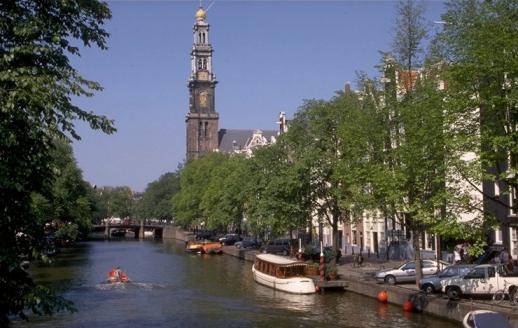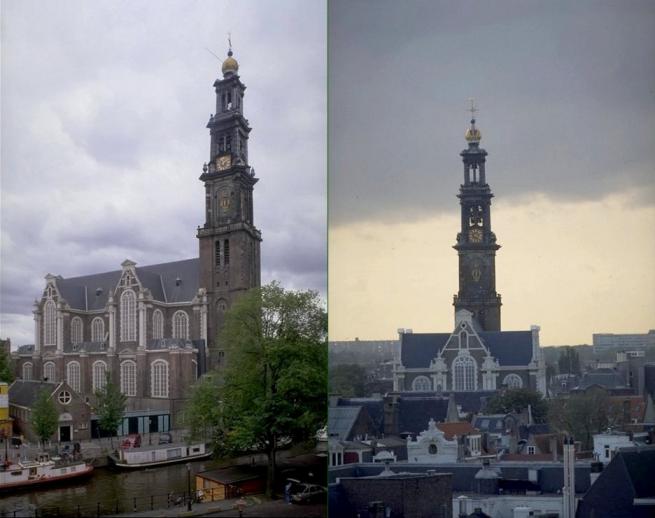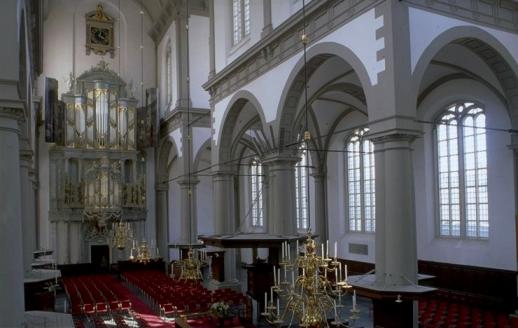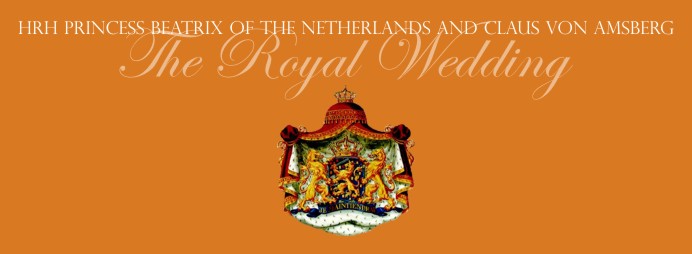


The Westerkerk, the setting of the religious ceremony of the wedding of Princess Beatrix and Prince Claus, was officially opened on Whitsunday 1631. It is one of the oldest churches especially built for the Protestant services, and the largest as such church in the Netherlands. The decision to build this church, as well as the smaller Noorderkerk, was taken in 1620, as a result of the urban expansion of Amsterdam and the need for churches for the new inhabitants. The foundation stone for the Westerkerk was laid on the 9th September 1620. The original project, by Hendrick de Keyser, is reconstructed above. After Hendrickís death, on May 15, 1621, his son Pieter succeeded him as city architect.
At the time of itís inauguration, it was the largest church in the world ever built for Protestant services, a position that was taken over by Sir Christopher Wrenís St. Paulís Cathedral, the magnificent London monument, only a few decades later.

On October 8th, 1669 the painter Rembrandt van Rijn was buried inside the church in a rental grave but nobody knows where. In 1906 - three hundred years after Rembrandts birth - a plaque was unveiled at one of the pillars in the north aisle, not far from the place where Rembrandtís son Titus was buried.
A curious note, in relation with the solemnization of the marriage of Princess Beatrix and Prince Claus, comes with the fact that near the church and in view of the tower, whose bells were removed during World War II in order to prevent them from being melted down and turned into weapons, Anne Frank wrote her diary, in the Annex, her hiding place from the Nazis. She would become one of the greatest symbols of the resistance against the Nazi bloodbath.

The tower of the Wersterkerk is actually the highest in the city and it was completed in 1638. With its 85 metres, it is disproportionately tall compared to the church below. Though the Protestant community owned the church, the tower was curiously the property of the local authorities, since for practical purposes the town council controlled all 17th century towers. They served as public timepieces and lookouts from where fires and other problems could be signalled.
The tower, which occupies a unique place in the affections of the people of Amsterdam, bears the symbol of the imperial crown of Maximilian of Austria, which was his gift to the city in gratitude for support given tot the Austro-Burgundian princes. It has inspired many songs and poems and remains a symbol of the city for Amsterdammers abroad.
The hour bell is the heaviest in Amsterdam, weighting more than 7.500 kilograms. The carillon, consisting of 47 tuned bells, was extensively restored in 1959.

The building, in the shape of a rectangle, is 29 metres wide, 28 metres high, and has 36 windows. Two rows of triplet-pillars support a clerestory in the form of a Greek cross. The nave is covered by a wooden barrel vault, of the type used extensively in coastal regions of the low countries, where the soft soil did not allow heavy vaulting. The Dutch Calvinist Protestants strongly advocated an austere and unadorned church interior. This ideological starting point was the driving force which resulted in the well-balanced geometrical arrangement of the basic parts of the building. Hendrick de Keyser designed the church in Dutch Renaissance style, characterized by a combination of brick and stone. The long vertical lines are reminiscent of the Gothic style.
The pulpit, as well as the richly decorated porches, dates back to about 1630. The splendid organ was built in 1686, but, in the course of time, it underwent many modifications. Gerard de Lairesse painted the organ shutters; those of the main organ case portraying a dancing David preceding the Ark, and the Queen of Sheba bringing gifts to Solomon; those of the front-positive with lovely depictions of now rare musical instruments. The fine copper chandeliers were sold off in 1830 and the current chandeliers are replicas (for which original chandeliers of the Portuguese synagogue served as models) made during the latest restoration, achieved in 1990. They came to replace the 19th century gaslight chandeliers. The original chandeliers of the Portuguese synagogue served as models.
Official Site of the Westerkerk

Wedding Page
Index Page






